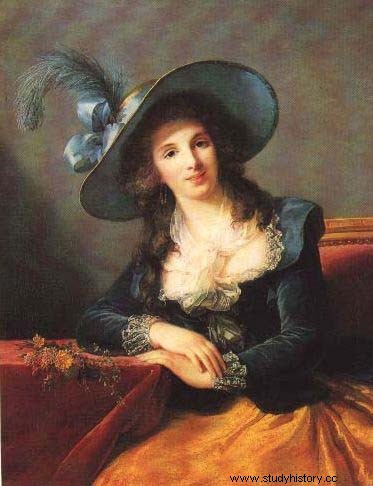Sophie Rostopchine, Countess of Ségur, ( 1799 – 1874) is a French woman of letters of Russian origin, whose very moralizing writings have become great classics.
A childhood in Russia
 Born on August 1, 1799 in Saint-Petersburg, Sophie Rostopchin was the third child of a Russian noble family in Mongolian origin. His mother, Catherine Protassova, is a former bridesmaid to Empress Catherine II. Her father, Count Fiodor Rostopchin, was Foreign Minister to Tsar Paul I, who was Sophie's godfather. Sophie spent her childhood in a rich and vast estate near Moscow, and received an aristocratic education, learning several foreign languages including French. She is abused by her mother, who frequently punishes her and forces her to convert to Catholicism.
Born on August 1, 1799 in Saint-Petersburg, Sophie Rostopchin was the third child of a Russian noble family in Mongolian origin. His mother, Catherine Protassova, is a former bridesmaid to Empress Catherine II. Her father, Count Fiodor Rostopchin, was Foreign Minister to Tsar Paul I, who was Sophie's godfather. Sophie spent her childhood in a rich and vast estate near Moscow, and received an aristocratic education, learning several foreign languages including French. She is abused by her mother, who frequently punishes her and forces her to convert to Catholicism.
In 1812, when Napoleon's army approached Moscow, where Sophie's father was governor. When the French troops entered, Fiodor Rostopchin had the city set on fire and set fire to his own house, forcing the enemy army to retreat. In doing so, he attracted the hostility of the inhabitants and, disgraced by the Tsar, he went into exile in various countries before reaching France. In 1817, he brought his family to Paris. Sophie, who was then 18, met Eugène de Ségur, Napoleon's aide-de-camp present during the fire in Moscow. Their marriage, for love, took place on July 14, 1819.
Stories for his grandchildren
The following year, Sophie's parents returned to Russia. In 1822, her father offered her the Château des Nouettes (in Lower Normandy) where Sophie chose to settle, leaving Paris. Fickle and unfaithful, Eugene rarely visits her and Sophie devotes herself to their eight children. It was thanks to her grandchildren that she launched herself, late, into literature.
The Countess of Ségur begins to write by writing down the stories she tells her grandchildren. At this time, the publisher Louis Hachette is working on a collection for children and is looking for authors. Hearing about the writing talents of the Countess of Ségur, through Eugène or the journalist Louis Veuillot, he met her and signed a first contract with her in October 1855. Sophie's first work, the New Fairy Tales , is a success and encourages him to continue. Thereafter, she was very productive, publishing, among other things, her Petites Filles Modèles in 1858 and his Malheurs de Sophie in 1864. From 1860, the collection of the Rose Library published all his works.
Stories echoing his own experience
The Comtesse de Ségur's novels deal with the daily life of children from good families and many elements echo her own experience, such as the recurring descriptions of corporal punishment, or the character of the mischievous and turbulent Sophie to whom she attributes her first name. She draws inspiration from those close to her, in particular her grandchildren, for many characters:the two "model little girls" have the first names of her granddaughters and the blindness of her eldest son inspires the character of Juliette in A good little devil . Quite Manichean, his novels have a strong moralizing component, opposing good and evil, right and wrong, valuing courage, generosity, gentleness. They present education and the family environment as determining factors in the construction of people:rowdy or even naughty children often turn out to be abused and can change. His novels subsequently had a real influence in terms of pedagogy.
In 1866, Sophie Rostopchine became a member of the Third Order Franciscans, a lay order, under the name of Sister Marie-Françoise, and continued to write. Her husband died in 1869 and the financial difficulties that followed forced her to sell her castle in 1872. She then moved to Paris, where she died on February 9, 1874.
